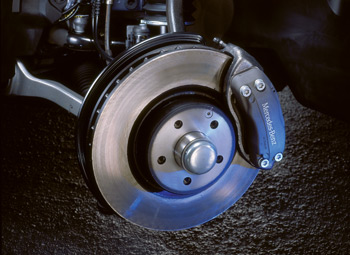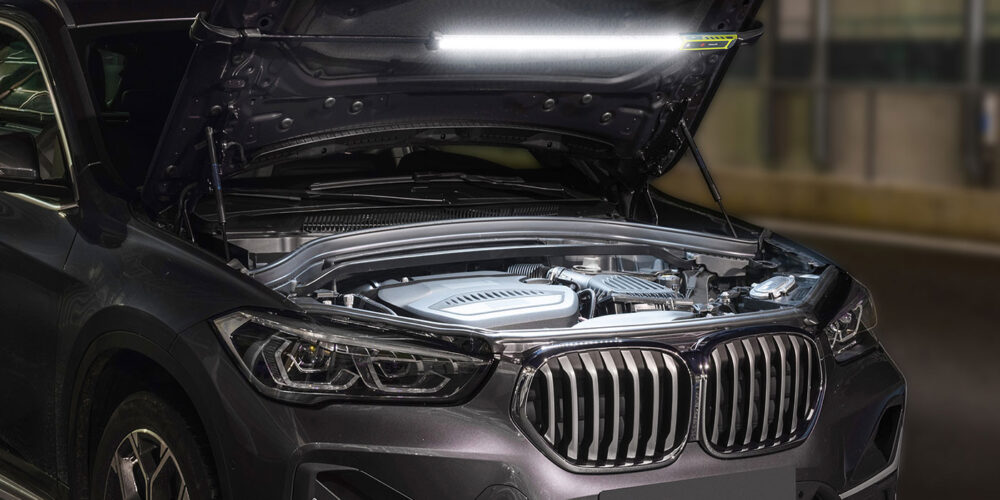Over the past decade, other vehicle manufacturers including Audi, BMW, Volkswagen, Lexus, Toyota and Mitsubishi have added Brake Assist to many of their vehicles. Lexus added Brake Assist in 2000, and made it standard on all models except the IS 300 in 2001. You’ll even find it on 2009 Toyota Corollas. 
What’s so great about Brake Assist? It helps vehicles stop faster and in less distance, hopefully reducing the risk of hitting obstacles, pedestrians or other vehicles. Many drivers are slow to react to emergency situations that call for immediate braking, and when they do react they often don’t press down hard enough on the brake pedal. Worse yet, if the ABS system kicks in, the noise and vibrations that feed back through the brake pedal may startle them, causing them to lift their foot off the pedal momentarily, or to pump the brakes. Either of these actions will reduce the effectiveness of the ABS system, and may increase the distance it takes to come to a complete stop.
A conventional vacuum power brake booster multiplies the force the driver exerts on the brake pedal by using atmospheric pressure working against a diaphragm to push the master cylinder pushrod. It’s a relatively simple setup and usually causes few problems. But a conventional power booster responds only to how hard the driver presses down on the brake pedal. It has no way of knowing if the brakes are being applied for a normal or panic stop.
Since the stopping distance of any vehicle depends on the reaction time of the driver, and how hard the brakes are applied, the only way to reduce the stopping distance is to allow the brakes to react more quickly and to apply with full force in an emergency situation. Brake Assist uses several techniques to accomplish this task.
BRAKE PRESSURE LOAD SWITCH
A switch that is usually located at the top of the brake pedal assembly monitors the speed and pressure with which the driver normally applies the brakes. The signal sent from the switch is monitored by the brake control module to develop a typical braking profile for the driver. Additional inputs from the ABS wheel speed sensors, vehicle speed sensor and/or yaw and acceleration sensors may also be used to determine if the vehicle is braking normally, or if it is being braked hard in a panic-stop situation.
On some applications with throttle-by-wire, the control module also monitors the position of the accelerator pedal position to determine when the driver lifts his or her foot from the gas pedal to apply the brakes.
If the control module determines the brakes are being applied in an emergency situation, Brake Assist takes over and uses stored pressure from the ABS accumulator to apply maximum pressure to all four brakes. If the vehicle is also equipped with Skid Control or Stability Control, those systems will kick in as well to make sure the vehicle stops straight and in the least distance possible.
On many applications, the Brake Assist system preloads the brakes to minimize the distance the disc brake pads have to travel to contact the rotors the moment the driver lifts his foot off the accelerator pedal. This minimizes the reaction time of the brake system so the car can stop in a shorter distance when the driver applies the brakes.
BRAKE ASSIST FAULTS
A fault in the Brake Pressure Load Switch, ABS pump, accumulator, hydraulic modulator, wheel speed sensors or control module should set a fault code and turn on the ABS warning light. Any problems in the hydraulics, such as a fluid leak that allows a loss of pressure, should turn on the Brake warning light.
Diagnostics will vary depending on the vehicle and application, but, at the very least, you will need a scan tool that can access and display ABS codes. A factory scan tool, or an aftermarket scan tool with the appropriate software, may also be required to run any system self-tests.








